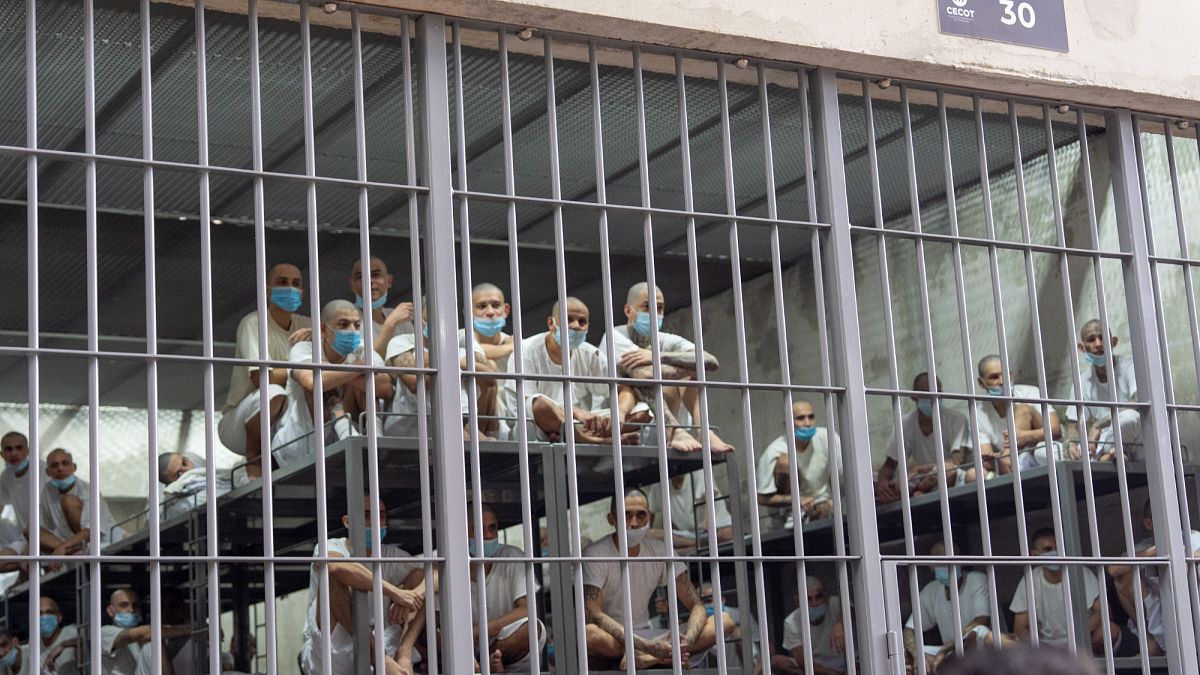Donald Trump has recently stepped up his threats to send Americans to foreign jails, saying he would “love” to deport “homegrown” US citizens who commit violent crimes to a notorious mega-prison in El Salvador.
“I would love to do that if it were permissible by law,” Trump said in an interview with Time magazine last month. “We’re looking into that.”
Apparently, that legal research hasn’t brought a clear answer yet, as Trump has also been on the lookout for more domestic space to house America’s top criminals.
“I’m talking about violent people. I’m talking about really bad people. Really bad people,” Trump said, seated beside Salvadorian president Nayib Bukele in the Oval Office a few weeks ago.
Bukele’s government runs the Terrorism Confinement Center, the megaprison often referred to by its Spanish acronym, CECOT, which has the reputation of being the most brutal jailhouse in the western hemisphere.
Trump has repeatedly voiced admiration and respect for the maximum security institution to which his administration has so far deported hundreds of undocumented migrants.
But CECOT seems to be becoming too small for the visionary Trump. He wants more prison capacity.
That’s why, two weeks ago, Trump doubled down on his stunning proposal to re-open and expand Alcatraz, the infamous prison island in San Francisco Bay.
Experts are doubtful of the practicability and funding required to expand Alcatraz, a series of buildings that are literally falling apart.
If it’s island prisons Trump’s looking for – the EU has plenty to offer, however, including storied properties that can hold their own beside Alcatraz and which appeal Trump’s sense of history and culture.
Here are three for starters to trade-off with Trump – no pun intended.
Let’s start with the most famous prison island: the Château d’If, off the Mediterranean coast near Marseille.
Even if its best-known prisoner, the Count of Monte Cristo, was a fictional character in Alexandre Dumas’ bestselling novel, the Château d’If has held many real – mostly religious – prisoners from the mid1600s to the end of the 19th century.
It’s also pretty secure: although the book features one of the main characters escaping the islet, it’s believed nobody actually managed this.
Trump appeal: The US president could deal directly with his pal Emmanuel Macron and side-step Brussels bureaucrats and the obnoxious Germans.
Next is Devil’s Island, also on French territory, albeit located off the coast of French Guiana, the largest of the country’s overseas departments, situated off the north east coast of South America.
The penal colony, in operation between 1852 to 1952, was notorious for its harsh treatment of detainees and the tropical climate and diseases that contributed to a death rate of 75% at its worst.
Devil’s Island was immortalised by author Henri Charriere, a former inmate, who penned the 1969 bestseller “Papillon” about his successful escape.
Trump appeal: See Château d’If.
Next is Goli Otok, an uninhabited island off the Adriatic coast of Croatia that was used as a top secret prison and labour camp when the country was part of Yugoslavia.
It was operated as a high-security institution between 1949 and 1989 and sequestered anti-Tito communists and Stalinists. Earlier during World War I, the Austro-Hungarian empire sent Russian POWs to Goli Otok.
The name means “barren island” in Croatian, because the surface is almost completely devoid of vegetation.
The prison became famous after Tito’s death in 1980, when Serbian writer Antonije Isakovic released his novel Tren (Moment) about the penal conditions there. The book was an instant bestseller.
Trump appeal: The prison has lain abandoned since 1989 giving strong Alcatraz vibes that might chime with the US president.
If potential prisons-for-tariffs pitch fails, Europe could point Trump to the criminal justice system in the Netherlands where the prison population shrank from 94 per 100,00 citizens to 51 between 2005 and 2016 – due largely to rehabilitation efforts.
The results: Some empty prisons have now been repurposed as hotels or cultural centres.
This might appeal to the real estate mogul in Trump.
Read the full article here


